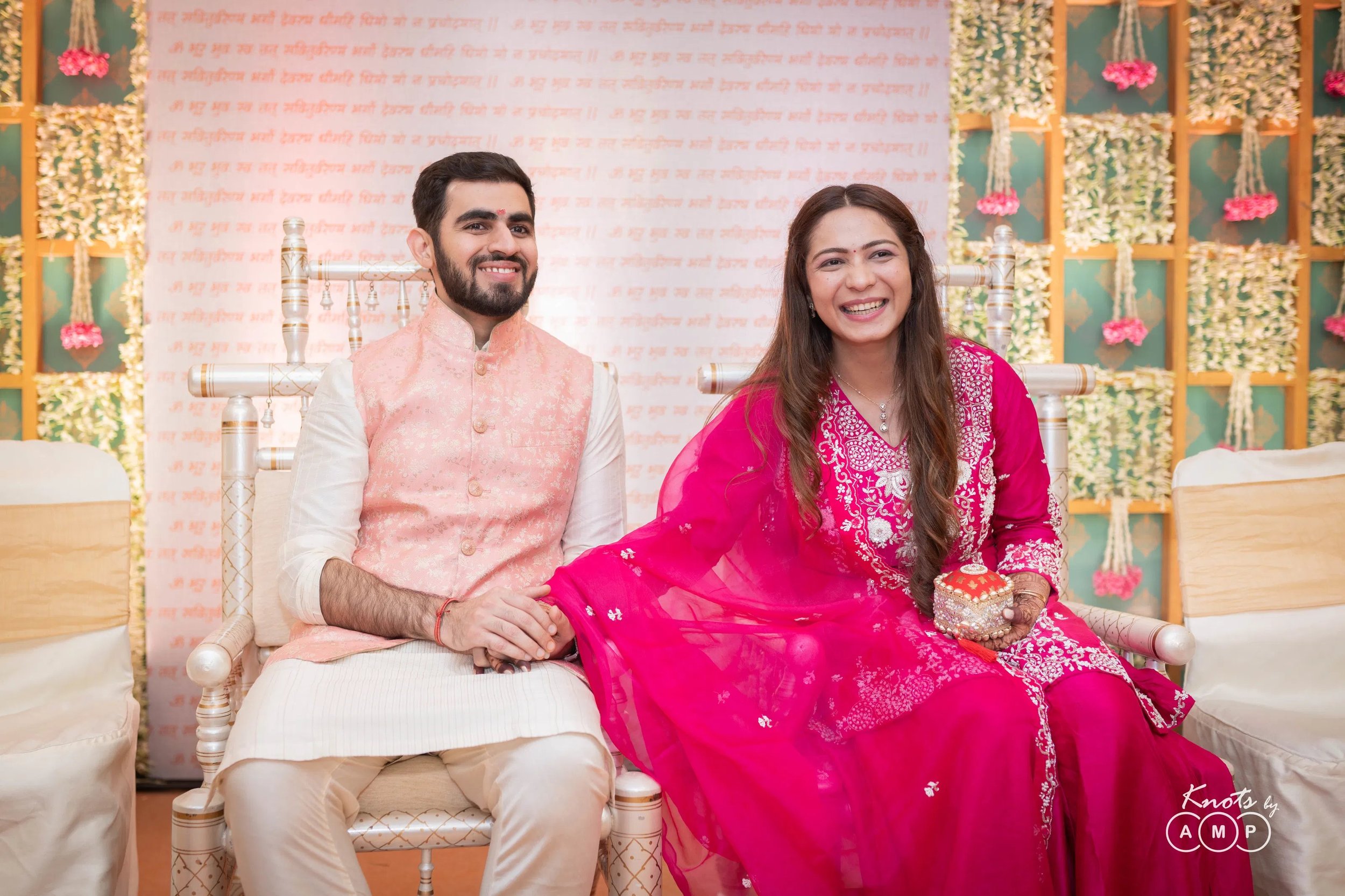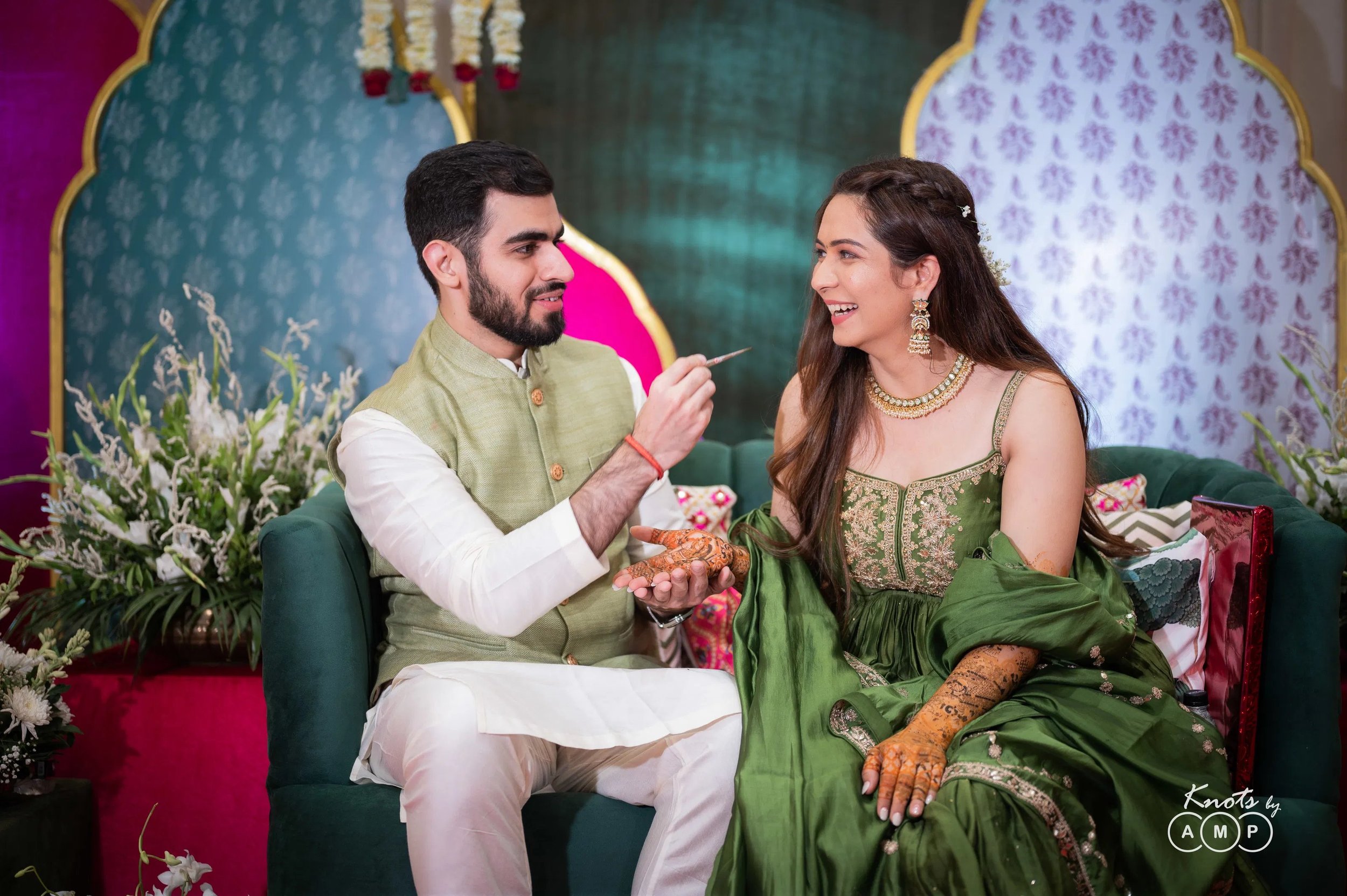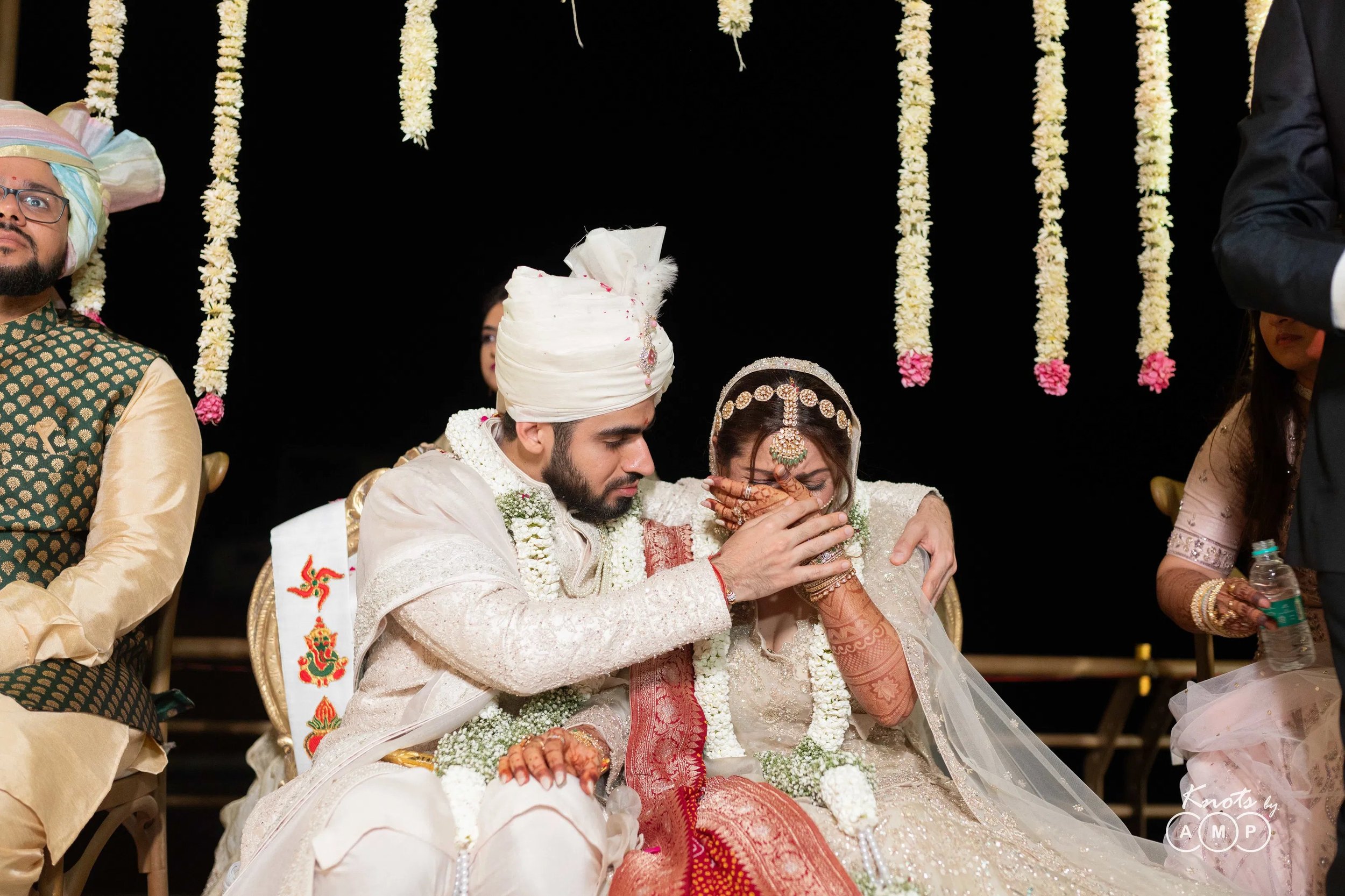Traditional North Indian Wedding Rituals and Their Significance
A North Indian wedding is more than just a grand celebration; it is a beautiful tapestry woven with deep-rooted traditions, cultural heritage, and symbolic rituals that bring two families together. Every step, from the pre-wedding customs to the final farewell, holds a special meaning, reflecting love, respect, and spiritual commitment. If you have ever wondered why certain rituals are performed or what they truly signify, Here’s a detailed breakdown of North Indian wedding rituals and their importance:
1. Roka Ceremony
The Roka ceremony marks the official beginning of a couple’s journey together. This is when both families formally agree to the marriage and celebrate the decision. It’s considered the first and most important step, as it symbolizes the acceptance of the union.
Family Approval: Both families come together to confirm the match and celebrate the couple’s future.
Gift Exchange: Dry fruits, sweets, clothes, and money (shagun) are exchanged as a sign of happiness.
Blessings: Elders bless the couple for a smooth and happy journey ahead.
2. Engagement Ceremony (Sagai)
The engagement ceremony, also known as Sagai, is a formal event where the couple exchanges rings and promises a lifetime together.
Ring Exchange: The couple places rings on each other’s fingers, symbolizing their commitment.
Auspicious Rituals: The bride’s family applies tilak (vermilion) on the groom’s forehead as a sign of respect.
Mini Celebration: Close family and friends gather, enjoy music, and celebrate the upcoming wedding.
3. Haldi Ceremony
The Haldi ceremony is all about love, laughter, and the magic of turmeric. It’s believed to cleanse and bless the couple before their wedding.
Application of Haldi: A paste made of turmeric, rosewater, and sandalwood is applied to the couple’s face and body.
Sign of Purification: It protects them from evil eyes and ensures a natural glow on the wedding day.
A Fun Celebration: Friends and family often smear extra Haldi on each other, making it a playful affair.
4. Mehendi Ceremony
The Mehendi ceremony is one of the most cherished pre-wedding events, celebrated with equal enthusiasm at both the bride’s and groom’s homes. This ritual is not just about adorning hands with henna but also about love, luck, and the joy of togetherness.
Celebrated at Both Homes: While the bride's Mehendi ceremony is grander, the groom also has a Mehendi function, where a small design is applied to his hands as a mark of tradition.
Bridal Mehendi: The groom’s initials are often hidden within the designs, adding a playful touch.
Symbol of Love & Luck: It is believed that the darker the Mehendi color, the stronger the bond between the couple.
Music and Fun: The ceremony is filled with dance, music, and laughter, making it a joyful celebration for both families.
5. Sangeet
The Sangeet is one of the most exciting pre-wedding celebrations, bringing both families together for a night of music, dance, and bonding. This event is all about fun, but it also serves a deeper purpose—creating strong ties between the two families.
Dance Performances: Family and friends put together fun, choreographed dances.
Bride vs. Groom’s Side: There is often a friendly dance battle between both sides of the family.
Bonding Time: It’s the perfect occasion for both families to come together and celebrate.
6. Baraat
The Baraat isn’t just about the groom arriving at the wedding venue—it’s a high-energy parade of music, dance, and celebration that announces the beginning of a new chapter.
Grand Entrance: The groom traditionally arrives on a decorated horse, but modern weddings feature cars, elephants, or even bikes.
Beats & Bhangra: The groom’s family and friends dance their hearts out as they accompany him to the wedding venue.
Welcoming Rituals: The bride’s family greets the Baraat with an Aarti and tilak, symbolizing respect and warmth.
7. Jai Mala
This moment marks the couple’s first interaction during the wedding, turning a simple exchange of floral garlands into a fun and symbolic event.
Garland Exchange: The couple places flower garlands around each other’s necks, signifying mutual acceptance.
Lighthearted Banter: The groom’s friends often lift him up, making it challenging for the bride to place the garland.
A Picture-Perfect Moment: This is one of the most visually stunning moments of the wedding.
8. Kanyadaan
Kanyadaan is the most emotionally profound ritual, where the bride’s father entrusts his daughter’s happiness to the groom, symbolizing a sacred bond.
A Sacred Duty: It is believed that performing Kanyadaan brings great spiritual blessings to the parents.
A Father’s Blessing: The bride’s father entrusts his daughter’s happiness to the groom.
An Emotional Farewell: It is one of the most touching moments of the wedding, often bringing tears to everyone’s eyes.
9. Mangal Pheras
The Mangal Pheras are the heart of a Hindu wedding, where the couple walks around the sacred fire, making vows to each other and the universe.
Seven Sacred Rounds: Each round represents a different vow related to love, duty, respect, and companionship.
Fire as a Witness: The sacred fire (Agni) is believed to be a divine witness to the marriage.
The Official Union: Once the pheras are completed, the marriage is considered sacred and binding.
10. Sindoor & Mangalsutra
These final rituals seal the bride’s transformation into a married woman, signifying love, devotion, and commitment.
Sindoor Ceremony: The groom applies sindoor (vermilion) on the bride’s forehead, representing marital bliss.
Mangalsutra Tying: The groom ties a sacred necklace around the bride’s neck, symbolizing their eternal bond.
A New Beginning: With this, the wedding rituals are complete, and a new journey begins.
11. Bidai
The Bidai ceremony is the most emotional part of the wedding, as the bride leaves her parental home to start a new life with her husband.
A Tearful Departure: The bride bids farewell to her family, marking the beginning of her new chapter.
Blessings & Gratitude: She throws rice backward, signifying gratitude for her upbringing.
A Bittersweet Moment: While it’s a sad goodbye, it’s also a joyous welcome into her new family.
12. Griha Pravesh
As the bride steps into her new home, she is welcomed with warmth, love, and rituals designed to bring prosperity.
Traditional Aarti: The groom’s mother performs a welcoming Aarti, blessing her with love and protection.
Rice Pot Ritual: The bride gently topples a rice-filled pot with her foot, signifying abundance.
First Steps into a New Life: She walks in, marking the beginning of her journey as a daughter-in-law and wife.
A North Indian wedding isn’t just about two individuals coming together—it’s the blending of families, traditions, and emotions that weave a lifelong bond. As the bride steps into her new home, she carries with her the warmth of her childhood, the blessings of her loved ones, and the promise of a beautiful future. Through every tear shed and every smile shared, these rituals remind us that love isn’t just about finding the right person—it’s about building a journey, hand in hand, with hearts full of hope and devotion.












